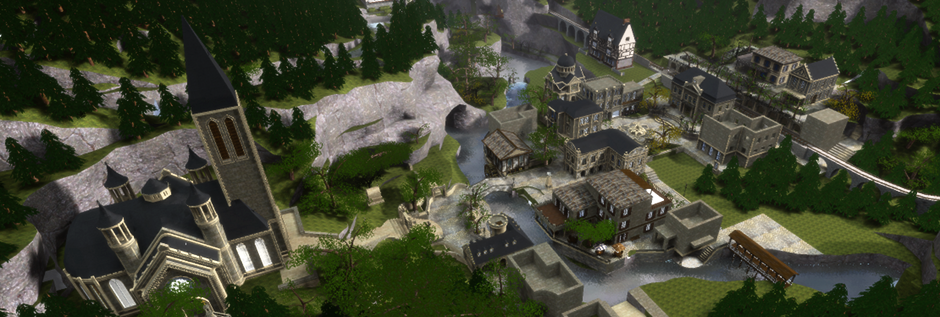The blendmapping tool of Sauerbraten is a great tool to improve the texturing of your creations. It allows you to smoothly apply one texture onto another.
Examples
(from cm|Valley)
Snow blended on grass
Ivy blended on wall
Gravel path blended on grass
How to do it
There's this area of grass and the idea is to create a gravel path going from the gate around the tree and back out.
1. Get texture-number
For blendmapping Sauerbraten is working with the unique number that is assigned to every texture used in Sauerbraten. The first step is to get the texture number of the overlaying texture. As we want to blend a gravel path, I chose a gravel texture and apply it to a random cube, then press F9* while having the textured surface selected to get its tex-num (texture number), which will appear in the upper left corner.
The tex-num of our gravel texture is 133. Keep it in mind.
*If there's no number appearing on your screen after pressing F9, enter this: /echo (getseltex) : (gettexname (getseltex))] If your F9 key is not used you can bind this command to your F9 key for the future by entering /editbind F9 [echo (getseltex) : (gettexname (getseltex))]
2. Select area
We want to blend the gravel on the grass, so we select the grass area and enter
/vlayer 133
We now enabled the grasstexture in our selected area to be blended with our gravel texture. This only affects the grass we select and not the whole grass of this kind in the map.
3. Switch to blendpaintmode / Turn fullbright off!
To blendmap, switch to blendpaintmode by entering /blendpaintmode 2. A blue "brush" will appear under your cursor. This is the actual tool to blendmap. You can now "paint" the path on the grass with it. Make sure to have fullbright turned off by pressing L or entering /fullbright 0.
You can select from a variety of brushes by scrolling with your mousewheel.
There are various blendpaintmodes. Blendpaintmode 2 is the normal mode to apply texture, blendpaintmode 4 is inverted in a way that the area around the brush is blended but not the brush itself, 5 is to erase or delete blended texture. When you're finished with blending enter /blendpaintmode 0 to get back to normal.
The default keys for the various blendpaintmodes are the numpad-keys. 0 is normal mode, 3 is filling etc.
If you do not only have one but numerous areas spreaded over the map that need to be blended it helps to create a blendable texture with the textures you need following the procedure above and then use the /gettex command to get those blendable textures in your scroll-texture menu. You can then apply the blendable texture you need on the required spots. For exmaple, cm|Valley has dirty paths on grass, gravel on grass, snow on grass, ivy in grey stone, ivy on bright stone, dirt on stone, grass on stone. With the procedure above, for each of those the blendable texture was created hidden underground. When needed, players use /gettex command to pick the blendable texture they need, then apply it where needed.
A good advice is to apply as little blendable texture as possible otherwise you will get into trouble when you have various blendable textures in your map. If you would, for example, replace the whole grass texture in cm|Valley with a grass texture gravel path can be blended on, you would have difficulties blending ivy on a rock that is surrounded by this grass. While blending the ivy on the rock, your brush would create gravel on the grass as soon as it touches it.
The brushes only work properly horizontally. On vertical faces they are distracted and do not allow exact blending.
In editmode the blended textures are only visible with fullbright off.
To display blendmaps in editmode and walk-around mode enter /showblendmap.
To delete all blendmaps from your map enter /clearblendmap.
Blendmaps are also visible after calclighting.
Blendmapping is very useful to create smooth overlay from one texture to another. You just need to apply blendable texture along the border of two textures and then apply blendmaps.
Combining blendmaps with vcommands allows great texturing. An example from cm|Skyscrapers is reflecting texture blended on vcoloured tiles so it now looks like polished granite.
Short Summary:
1. F9 to get texture-number of overlaying texture, applied texture
2. /vlayer x where x is the number of the overlaying, the applied texture.
3. /blendpaintmode 2
---
by Cooper









